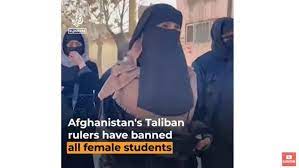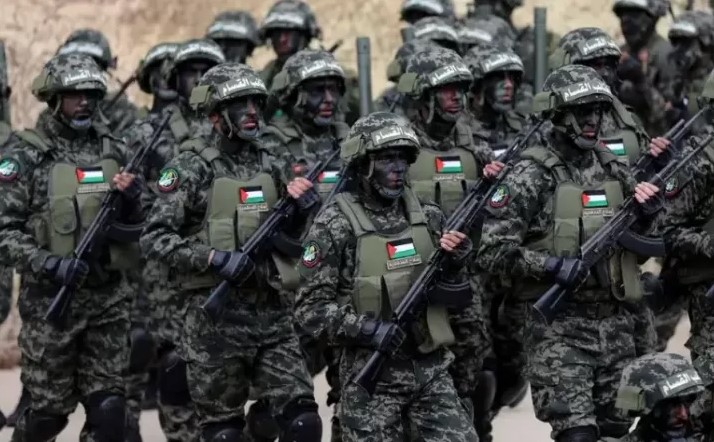
The foto has taken from NU Online
STRATEGIC ASSESSMENT. Recent reports suggest that girls have been able to attend school in Kunduz Province but remain barred from classrooms throughout much of Afghanistan, with many young women destroying evidence of higher education or employment for fear of retribution from the new Taliban government. This development belies the initial hopes of some international actors that the Taliban would keep their promise to respect human rights and be a kinder, more inclusive version of their earlier brutal regime. However, since taking over, the Taliban have formed a government that includes no women, yet includes many individuals currently under international sanctions, and replaced the Women’s Ministry with the “Ministry of Virtue and Vice.” Far from promoting education for half the country’s population, the earlier iteration of this ministry served as the Taliban’s moral police enforcing a rigid dress code, forced confinements, and brutal punishments that left most women out of education, public, and political life. Earlier last week, United Nations Secretary-General António Guterres expressed alarm at “promises made to Afghan women and girls by the Taliban being broken,” and strongly appealed to the Taliban to “keep their promises to women and girls and fulfill their obligations under international human rights and humanitarian law.”
Even before the hasty withdrawal of the United States and its Western allies, there were widespread concerns about the impact of their exit on human rights and women’s education in Afghanistan. Women’s rights were part of the original narrative explaining the United States invasion of Afghanistan in 2001—from then First Lady Laura Bush to then Secretary of State Hillary Clinton—women in Afghanistan were told the U.S. stood with them, always. Already suffering low levels of literacy and development and high levels of domestic abuse and violence, women have long feared that their rights would be compromised for security considerations in Afghanistan. As the Taliban reopened high schools for boys but left the fate of girls unclear, and banned women from taking up their jobs in government, such fears gained further traction. These fears were fully realized in September when Kabul’s acting Mayor Hamdullah Nohmani announced a Taliban order telling female employees in city government to stay home and only undertake jobs that cannot be done by men. Of the 2,930 people working for the Kabul municipality, 27% are women who, hundreds of whom are out of work following the restrictions. Already facing dire development crises, many in the country have reported urgent food and other needs, with the UN reporting that 18.4 million people will be in need of humanitarian assistance.
For two decades after the fall of the Taliban, women and girls made gains in Afghanistan. They established civil society organizations, became the face of the media in parts of the country, and took on the tasks of governing and maintaining law and order as politicians, governors, and security force members. However, U.S.-led peace negotiations with the Taliban focused primarily on security, and offered little guarantee that such gains would be maintained. Women like Fawzia Koofi, politician and women’s rights activist, have had to leave Afghanistan and seek shelter in other countries. Just earlier last week, a group of young female footballers from Afghanistan were granted visas, having left the country via Pakistan for fear of Taliban reprisal. Shortly after the fall of Kabul, Mexico welcomed five women from Afghanistan’s robotics team, which had only earlier garnered international acclaim. Aisha Khurram, who was selected as Afghanistan’s Youth Representative to the United Nations in 2019 and briefed the Security Council in December of that year, documented her heartbreaking departure from her homeland in August this year.
For those who have wondered whether there is a gendered dimension to terrorism and counterterrorism, the Taliban and their partners have made little secret about their views on gender equality and women’s rights. At the same time, despite the pro-woman rhetoric of the past twenty years, it is clear that women across the board did not benefit, making it critical that longer term planning for Afghanistan reflect the views of half the population. Violent extremist groups have exploited gaps in Western rhetoric and action as well as structural inequalities in many countries to recruit support from women and girls. The terrorism landscape in Southeast Asia has witnessed a shift in the last decade in the roles of women in violent extremism. An unprecedented estimate of 20% of foreigners traveling to join or support ISIS were women, who assumed multiple roles in the extremist sphere as supporters, perpetrators, victims, and preventers in a complex landscape. Ignoring the gendered dimension of terrorist groups and their mobilization strategies has left many practitioners blindsided in the face of female perpetrators, and responses to terrorism continue to neglect the differential impacts on women with little concrete allocation of resources to address the gendered dimensions of radicalization and mobilization. Women’s human rights should be a standalone consideration, not linked to terrorism, but it is also clear that terrorist groups have a direct and strategic impact in prolonging inequality and underdevelopment. Afghanistan is a critical case where the intersections of the “Women, Peace and Security” and counterterrorism agendas merit closer attention (TSC).





